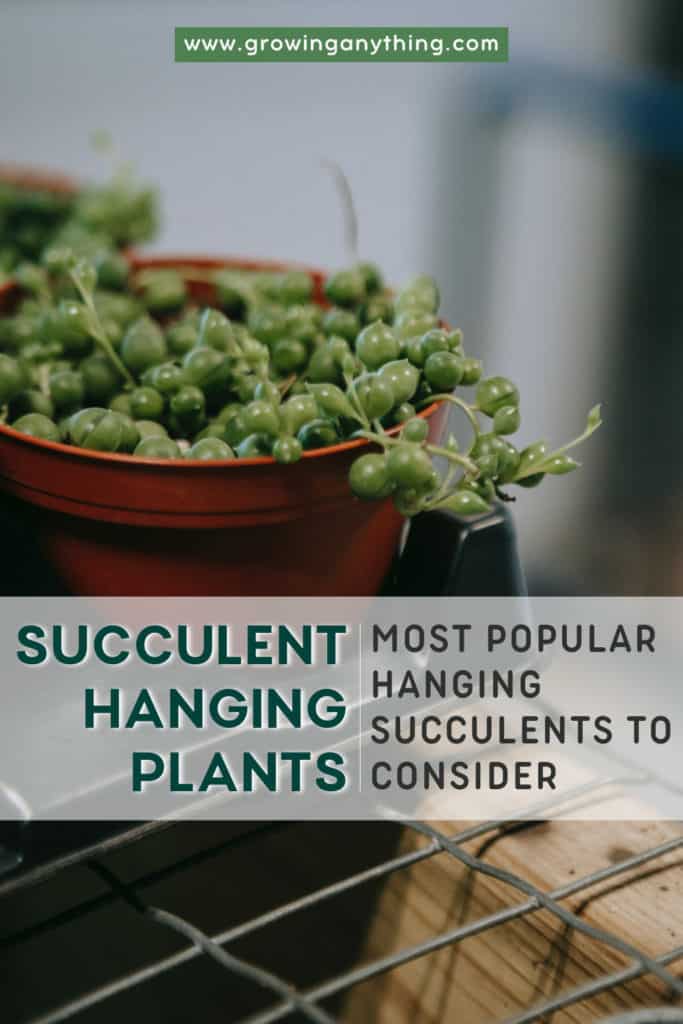30 Most Popular Succulent Hanging Plants
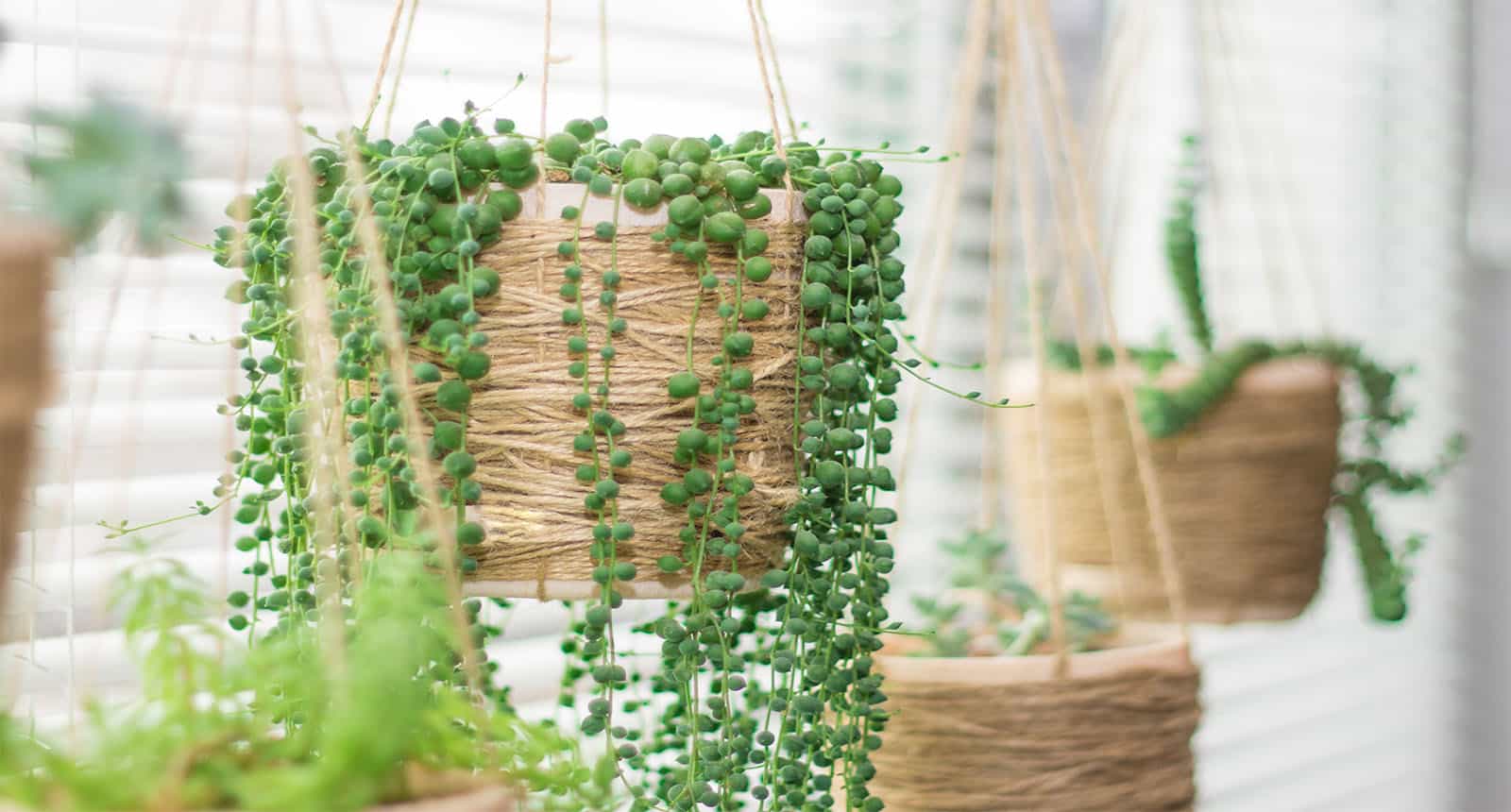
Succulent hanging plants have taken over the world. They can be found in either hanging baskets, living wreaths, fairy garden teapots, wall art, or anywhere in between.
Hanging plants add charm and character to any arrangement. If you’re wondering which type of hanging succulents is suitable for your space, you’ve come to the right place.
In today’s article, I will share 30 of the most popular hanging succulents to consider for your living room, kitchen, or balcony. Without further ado, let’s hang some plants.
What is a Hanging Succulent?
A hanging succulent is a lovely and sophisticated manner that will help you turn your indoor or outdoor areas into something special. Hanging succulents will add charm to your home.
Taking care of hanging succulents isn’t as easy as everyone says. However, don’t worry. I will share a full guide on how to choose the right succulent for your home and how to take care of it.
Even if you’re a very busy person, you can still successfully take care of the following hanging succulents such as Ruby Necklace, Peanut Cactus, and Strings of Nickels, just to name a few.
Watch this video to know more:
Are Succulents Good Hanging Plants?
Yes, they’re good hanging plants. There’s a wide selection of succulents that would look great in hanging pots or containers, adding a lovely touch to your surroundings. The best part? They’re low-maintenance. Meaning, they’re perfect for busy people and make for a beautiful hanging garden.
Can Succulents Grow in a Hanging Basket?
Succulents can grow in a hanging basket. They just need good soil drainage to develop properly. Opt for hanging baskets with sphagnum moss or coco-fiber liners to provide that drainage. Plant your succulents in a gritty potting mix (the best potting mix for succulents) and watch your plants thrive.
What Succulents Are Good in Hanging Baskets?
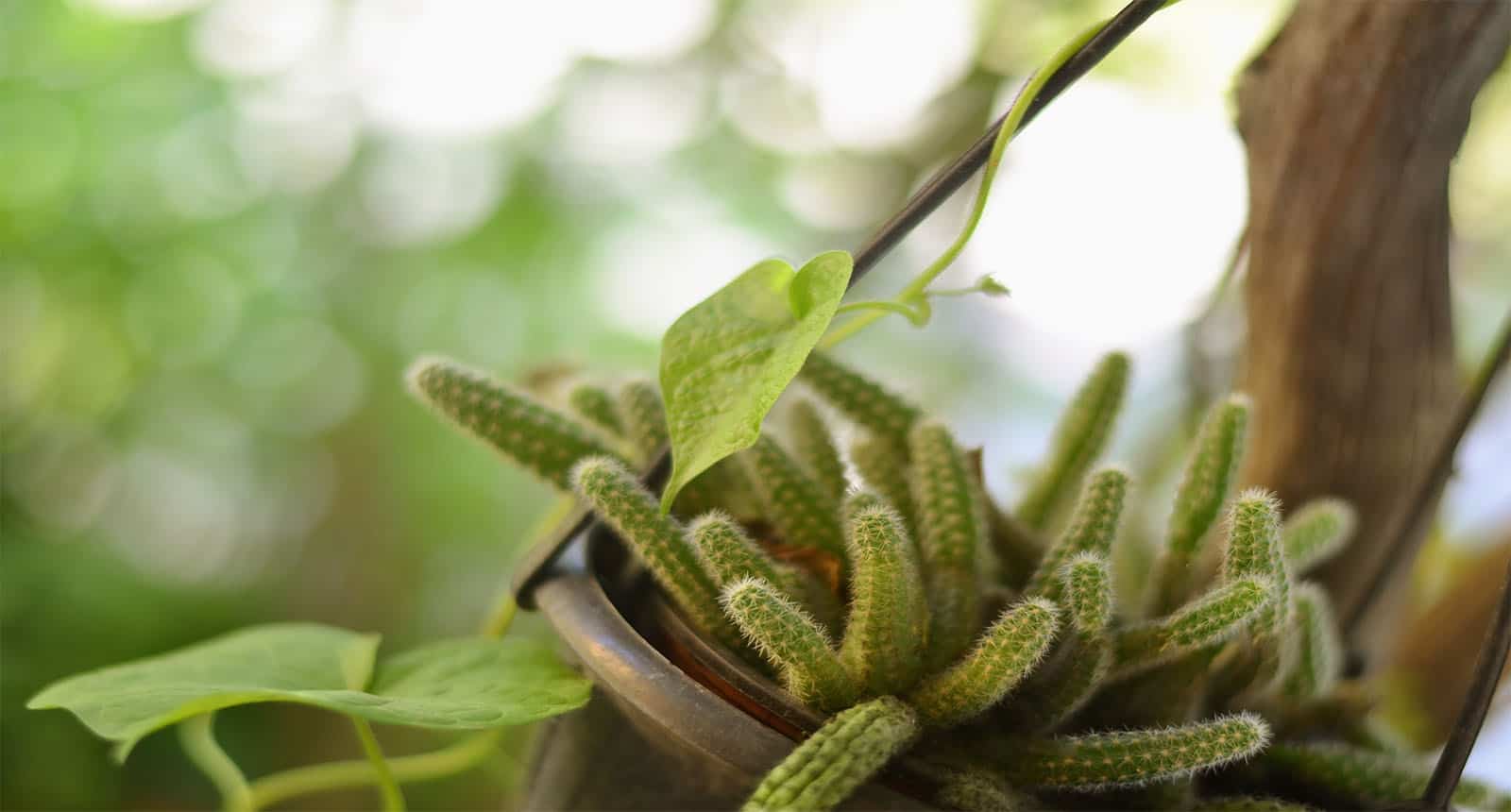
If you’re interested in installing hanging baskets around your place and you also like cacti and succulent plants, you might be wondering what succulents are good in hanging baskets.
Fortunately, there’s a broad spectrum of succulent plants that hang down and make for lovely succulent hanging plants such as the following. The best part? They all need very little care.
1. A String of Peas, String of Pearls (Senecio Rowleyanus)
The String of Pearls or Peas is native to South Africa. Many people pick this plant because it’s a super versatile and beautiful hanging plant. It looks lovely anywhere you stick it and it adds another dimension to any arrangement. You can plant it in teacups or hanging baskets and watch it thrive.
The stems can develop up to 3 ft (90cm) long and can be left trailing. Or hanging. When sliced, they will split into two or more and keep on developing. They’re lined with round, tiny, and pea-like green leaves. If you’re looking for a low-maintenance plant, look no further than the string of pearls/peas.
They’re not frost-tolerant and need well-draining soil like any other succulent. Established plants need less water than younger ones. Never let the soil dry out completely and water only when it’s dry.
These plants need bright but indirect sunlight, so you will need to protect them from the afternoon sun. But here’s the kicker. They provide white, fuzzy flowers with a sweet and vanilla scent.
Watch this video to know more:
2. Kenya Hyacinth (Sansevieria Parva)
Commonly known as Kenya Hyacinth, Sansevieria Parva is a member of the rare snake plant family. It’s also known as the snake indoor/outdoor hanging plant that comes with a lot of benefits.
It will thrive both indoors and outdoors. Generally, it’s a slow-growing plant with reflexing narrow leaves that can develop up to 1 inch wide and 16 inches long. They grow out of small thick rosettes.
The reason why this plant is great for hanging baskets is that its leaves also release long stolons that end in small plantlets. It also features tiny, pinkish flowers that show spikes and a lovely scent.
Watch this video to know more:
3. String of Beads (Senecio Herreianus)
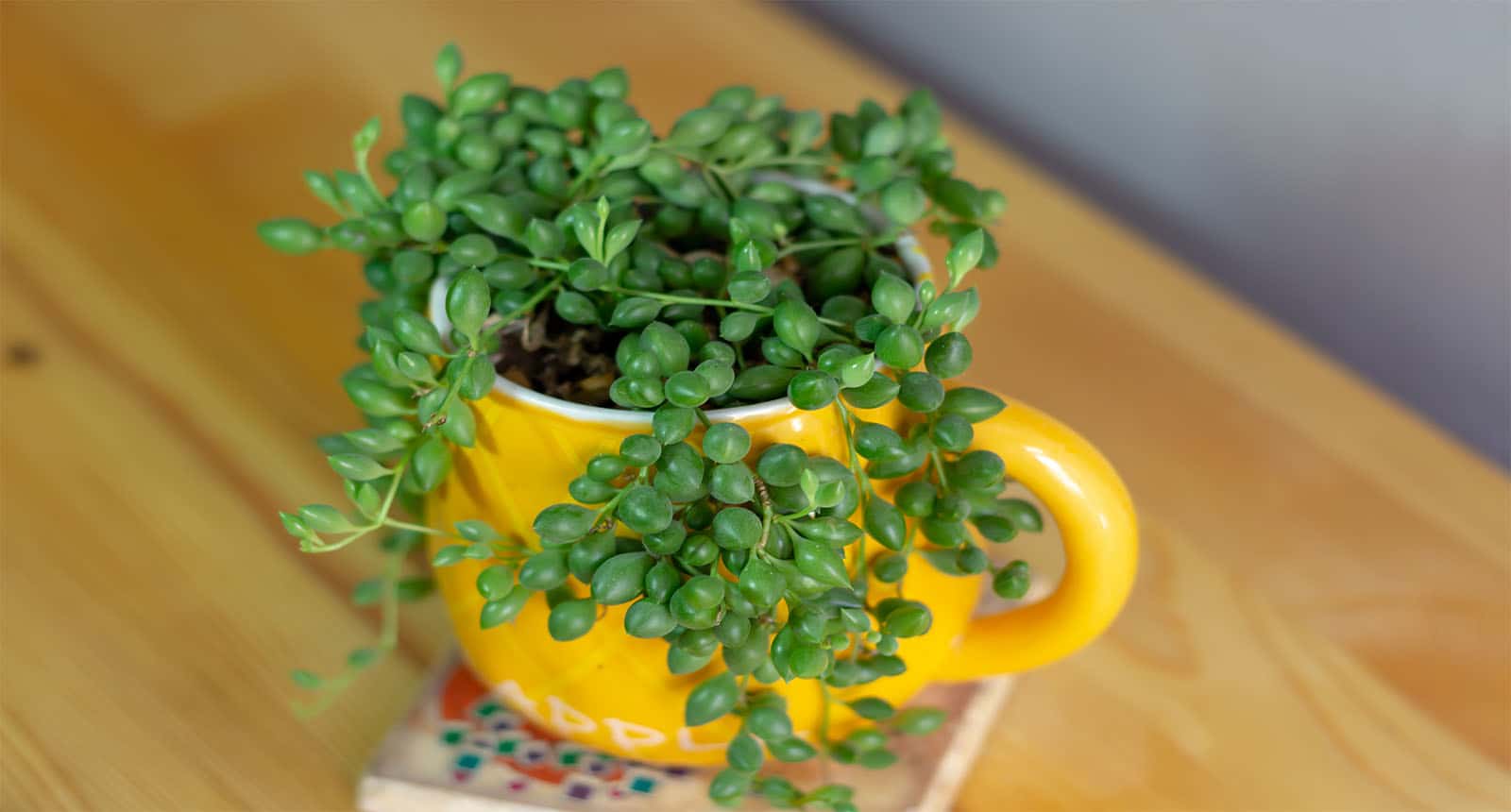
The String of Beads is very similar to the String of Pearls. The only difference is in the form of the leaves. This plant has oval-shaped and more pointed leaves, rather than round ones. The stems can develop up to 3 ft (90cm). Sliced stems can be propagated and root easily.
The cut components will split and keep on growing. I like this unique plant because it’s not only suitable for hanging baskets but can also be planted as ground cover in-ground.
When planted as ground cover, they creep and drape the ground. The worst part? You will need to keep them safe from frost. The established ones are drought-tolerant and need a well-draining ground. Water when the soil is dry and situate them away from direct sunlight.
Watch this video to know more:
4. Rat Tail Cactus (Aporocactus Flagelliformis)
If you’re looking for a versatile plant, look no further than Rat Tail Cactus. It can grow in any condition. It has trailing and long stems which can develop up to 1/2-inch in diameter and 4 ft in length. They’re very flexible. Meaning, they’re ideal for hanging baskets.
Keep in mind that this plant has brown hairs that cover the stems. And they can be sharp, so extra care is required when handling them. I like this plant in Spring because it’s more appealing.
In Spring, the succulent grows tubular, crimson flowers. This adds to the cactus’s look when the stems get out of the pot like a waterfall that reminds you of nature’s beauty.
Watch this video to know more:
5. String of Bananas (Senecio Radicans)
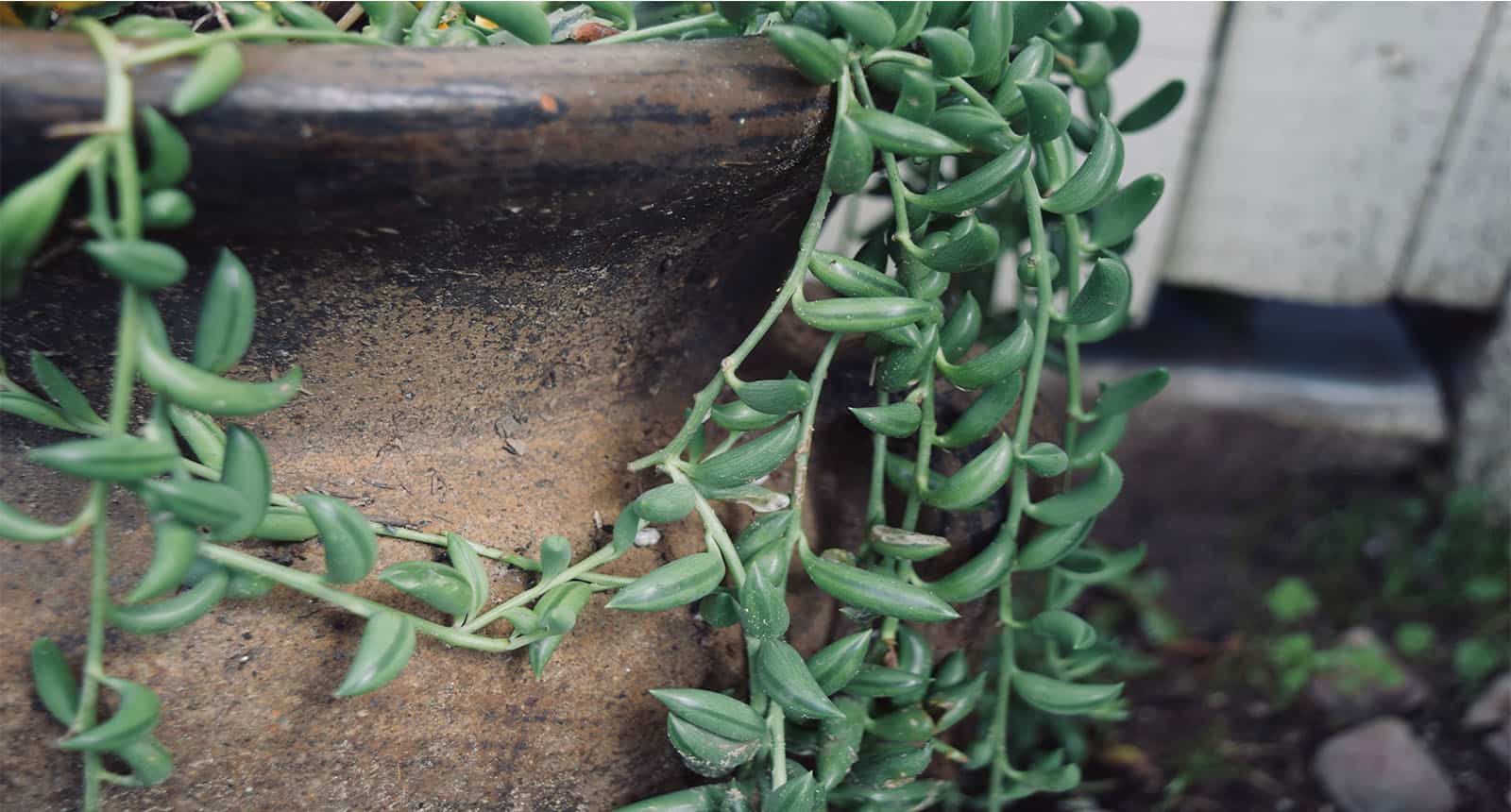
The Strings of Bananas is another plant that’s native to South Africa. It’s a fast-growing one with stems that develop up to 3 ft (90cm) in length. I just love the banana-shaped green leaves.
They deliver small yellow, white, or lavender fuzzy blooms similar to String of Pearls that release a sweet cinnamon smell. The stems can be sliced and propagated since they split into two or more and keep on growing. These hardy plants can either be grown as tall planters, hanging planters or vines.
I find the string of bananas harder and easier than the string of pearls or string of peas plant. Only water when the soil is dry. Give a well-drained soil and protect from frost and direct sunlight.
Watch this video to know more:
6. Elephant Bush (Portulacaria Afra)
The Elephant Bush or Portulacaria Afra is also native to South Africa. What’s interesting about it is that it’s also food for elephants and other wild animals in their habitat.
The elephant bush is known for its small and green leaves and brown stems. They grow high (up to feet in their native habitat) when provided with the proper nutrients and maintenance.
It comes in 2 varieties. However, either can develop outward or downward. Therefore, this plant is ideal for hanging baskets. You can apply it as a spiller that grows at the edge of your basket.
This place is the perfect choice for people who reside in a hot country as it can handle the direct heat of the sun. It’s a simple-looking plant for lovers of the minimalistic style.
Watch this video to know more:
7. Fish Hook Senecio (Grey Fishhooks Senecio)
The Fish Hook Senecio is very similar to the String of Bananas. This is why people confuse these plants very often. And honestly, the only difference between the two lies in the leaves.
The Grey Fishhooks Senecio has longer and flatter leaves than the String of Bananas. They’re blue-green and shapes like fish hooks. This plant is perfect for both in-ground and hanging baskets.
It’s native to South Africa and requires a well-draining ground. Water when the surface inch of the soil is dry. Finally, provide bright light. However, protect from direct sunlight and frost.
Watch this video to know more:
8. Trailing Jade (Senecio Jacobsenii)
The Trailing Jade, also known as Senecio Jacobsenii features thick stems with 2-3 inch long egg-shaped, fleshy, and green leaves. They overlap each other along the stems.
This provides a violet color blush when winter. The bright-orange blooms usually appear in autumn. It’s also said to have a cheesy rich smell. Both flowers and leaves stand upright from the stems.
Therefore, they add to the aesthetics. This plant can develop up to 4 ft long, so cultivating it in a basket will cause the stems to drape over the hanging basket, providing a plant art.
Watch this video to know more:
9. A String of Nickels (Dischidia nummularia)
The String of Nickels features flat and round, bluish, green, and gray leaves. The leaves deliver the look of coins hanging on a string. The Strings of Nickels are epiphytes by nature.
Meaning, they grow on other plants, rocks, or tree trunks. The tropical rainforest is their native habitat. I like this plant because it looks wonderful in hanging baskets, living wreaths, or wall art.
They give white and creamy flowers. They’re epiphytes by nature, so they need a well-draining ground. Opt for a ground made for epiphytic plants containing coconut husks or shredded bark.
You can also apply coarse perlite, gravel, or pumice to a cactus ground mix to boost drainage. This plant needs more humidity and bright indirect sunlight than other succulents.
Watch this video to know more:
10. Christmas Cactus (Schlumbergera bridgesii)
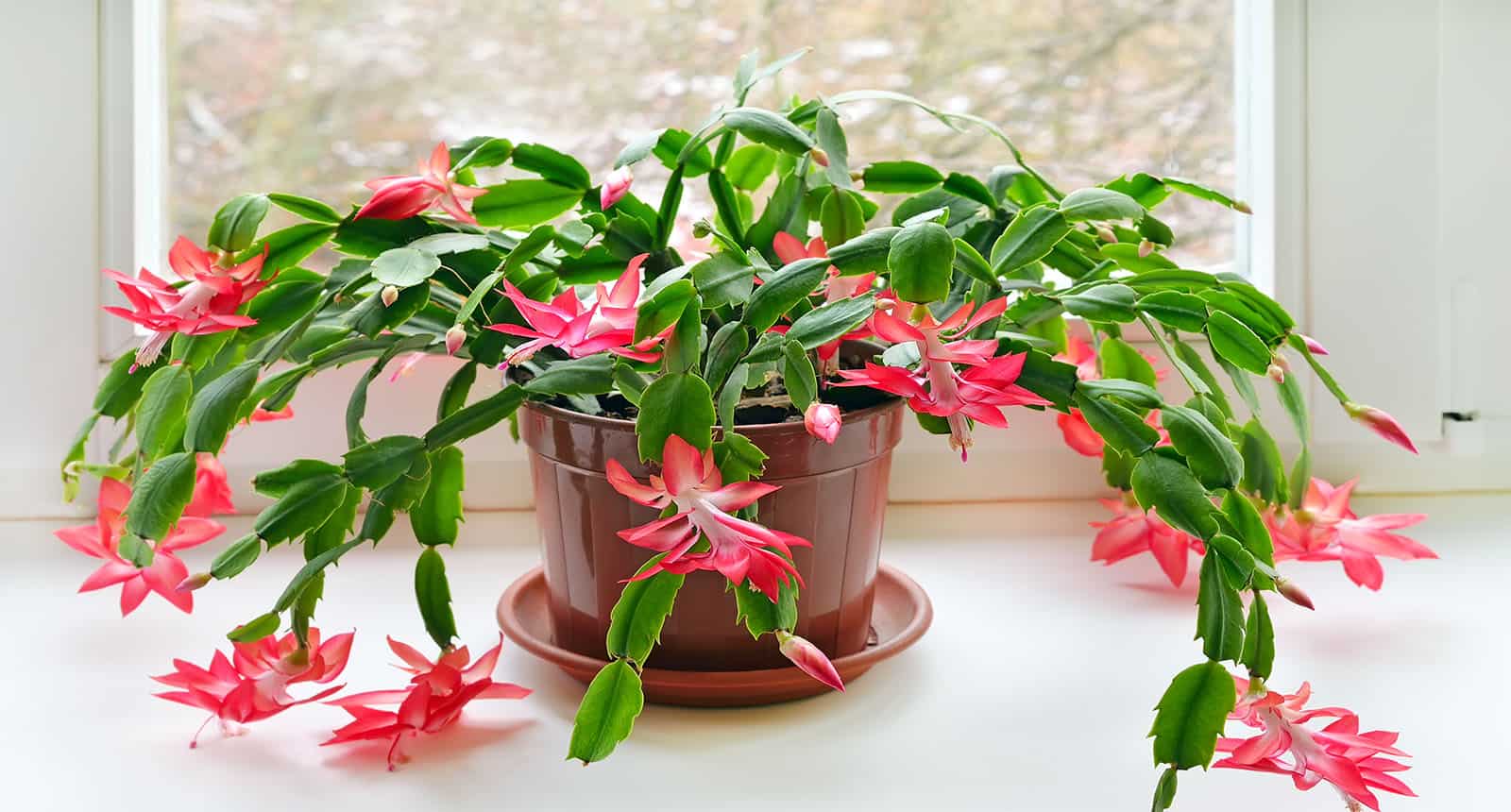
The Christmas Cactus, also known as Schlumbergera bridgesii is said to flourish in time for Christmas. It’s a popular yet unique cactus with the leaves serving as stems and bodies flattened.
I love this cactus because of the flat, small stem segments. They’re roundish and feature small serrations on both sides. The flowers bloom in the early winter and late fall in time for Christmas.
Usually, it’s carmine red with a note of violet in the middle. Cultivating this plant in a hanging basket will boost those bright, long stems falling over the basket and make for a nice decoration.
Watch this video to know more:
11. Calico Kitten (Crassula Pellucida Variegata)
Calico Kitten, also known as Crassula Pellucida Variegata is a lovely plant with heart-shaped and colorful variegated leaves. They’re a mix of various shades of pink, green, violet, and cream.
I just love this plant. It’s become one of my favorites because of the heart-shaped leaves. The plant looks amazing in hanging baskets. However, it’s also effective as a ground cover, so it’s versatile.
But here’s the kicker. When exposed to direct sunlight, the leaves of this plant turn dark violet. It offers white flowers and requires well-draining ground, so water only when the ground is dry.
Watch this video to know more:
12. Dancing Bones (Hatiora Salicornioides)
The name of this plant sounds scary and eerie. However, it’s a lovely plant that’s also known as Hatiora Salicornioides. You should consider this plant as your next hanging succulent in your garden.
It’s a very original plant that provides a unique display of contorted stems. The deep green foliage makes this plant a beautiful addition to your indoor garden if you want to step up your gardening game.
In spring and winter, the dancing bones provide yellow and small flowers at the end of the shoots. It can grow up to 20 inches in length. If you’re looking for a unique plant, look no further than this one.
Watch this video to know more:
13. A String of Hearts, Rosary Vine (Ceropegia Linearis Woodii)
If you’re searching for something truly original, then these succulent vines with heart-shaped leaves are the ideal choice for you. Their vines can grow endlessly and can get over 6 ft (183cm).
This plant has dark green leaves. It’s associated with the Hoya and shares the same family. They’re called Strings of Hearts or Rosary Vine and make for a lovely succulent for hanging baskets or pots.
They look amazing trailing as vines in a container as well. The string of Hearts is super easy to maintain. Provide enough bright indirect light, well-draining soil, and water more in the summer.
Watch this video to know more:
14. The Hindu Rope, Wax Plant (Hoya)
Native to Australia, East Asia, and Southern India, the Hindu rope is best known for its heart-shaped and thick leaves and vine-like traits. It’s also known as the wax plant that belongs to the Hoya genus.
However, not every hoya is succulent. Hoyas are popular among homeowners and do well indoors and out. They require bright but indirect light. Most of them thrive in partial shade in hanging baskets.
The wax plant requires more moisture than other succulents, so you will need to provide a well-draining ground and water when dry. Water little during winter and more during the growing season.
Watch this video to know more:
15. October Daphne (Sedum sieboldii)
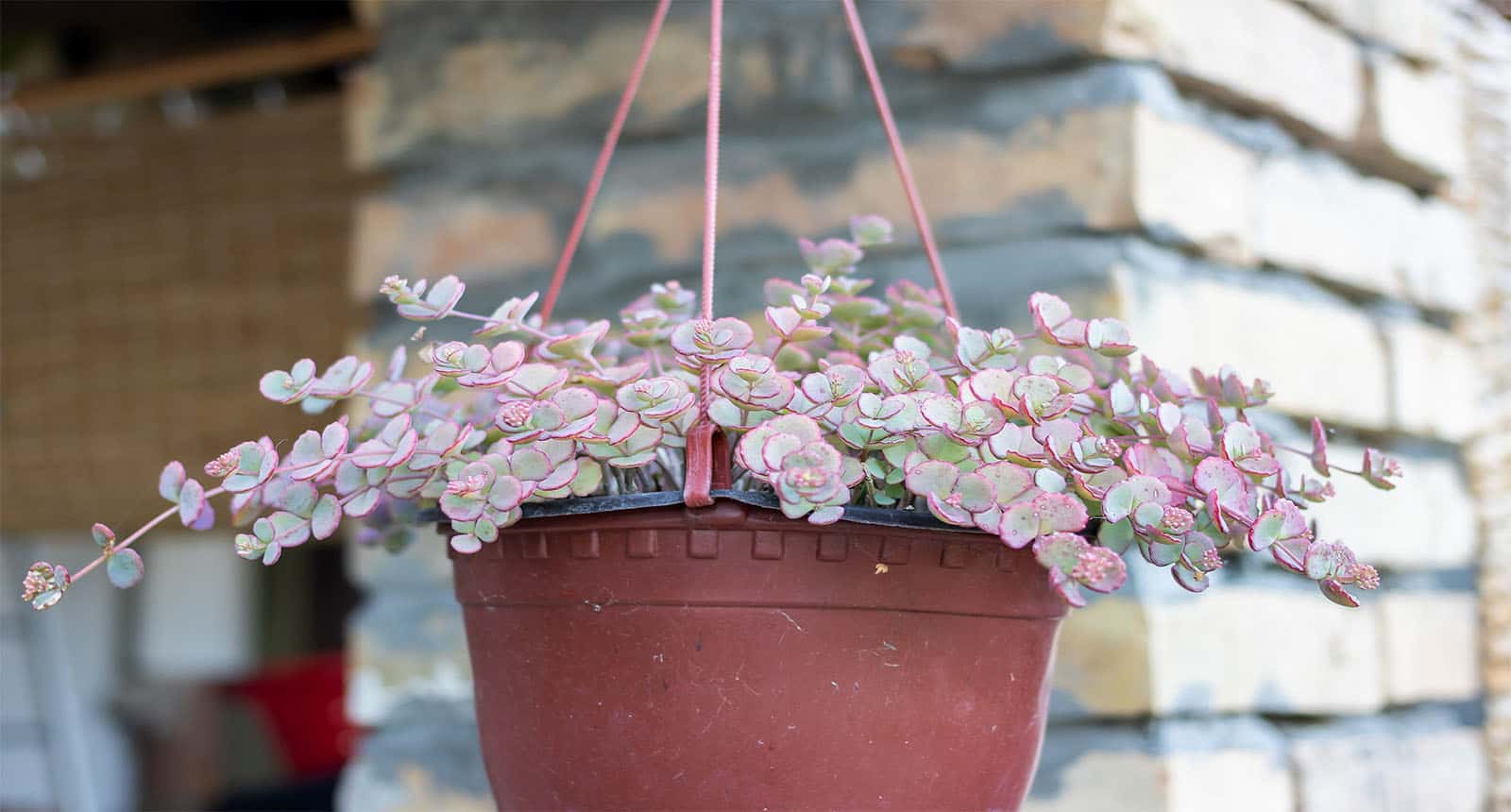
The October Daphne, also known as sedum sieboldii has the prettiest foliage out of all sedums. I like this plant because it’s colorful with light green leaves and pinkish points.
The pinkish color of the tip intensifies during summer. If you’re searching for low-spreading species that makes a rounded mound with horizontal branches coming out from the middle, then October Daphne is the perfect option for you. Plant it in the very middle of the container.
In autumn, the star-shaped bright pink flowers flourish and show in clusters at the edge of the stem. The stems develop up to 12 inches in length, so it’s ideal for hanging baskets.
The whole nature of October Daphne makes it perfect for hanging baskets. The autumn color adds to its beauty as the plant turns into shades of orange, yellow, red, and pink.
Watch this video to know more:
16. Burro’s Tail, Baby Donkey Tail (Sedum Burrito)
Sedum Burrito is also known as burro’s tail or baby donkey tail. It’s a plant native to Southern Mexico. It has very long, hanging stems coated with thick plump, lime-green to blue-green leaves.
They can hang and develop up to 12 inches (30cm). They’re related to Sedum Morganianum. The leaves are shorter and smaller. You can either use this plant in hanging baskets, trailing out of a wall display, or spilling down the side of a tall planter. They’re eye-catching, beautiful, and sweet-smelling.
Once planted, they’re easy to care for. Just provide well-draining ground. Water only when the top inch of the ground is dry. Water more when it’s hot outside and less during the winter months.
Watch this video to know more:
17. Variegated Trailing Jade (Crassula Sarmentosa)
The variegated trailing jade, also known as crassula sarmentosa is a scrambling succulent. It can develop up to one ft in height and spreads from the platform with red stems that develop up to three ft. It arches outwards and falls, so it’s perfect for hanging baskets.
This plant has oval leaves with toothed margins and pointed tips. They’re green in the center with yellow edges. What I like most about this plant is the star-shaped flower.
The white flowers of Variegated trailing jade can show in late fall. Under direct sunlight, the foliage gets a red tinge which adds to the appearance of the plant.
Watch this video to know more:
18. Donkey’s Tail, Burro’s Tail, Lamb’s Tail (Sedum morganianum)
Sedum morganianum is also native to Southern Mexico and similar to Sedum Burrito. They’re known as Burro’s tail, lamb’s tail, or donkey’s tail. It’s the shape of the leaves that’s different.
They have fatter, longer, and pointy lime-green to blue-green leaves. You can use this plant in a hanging basket or as trailing plants in various arrangements. They’re also very drought-resistant.
Meaning, you will need to provide a well-draining ground. Water only when the top inch of the ground is dry. Sedum morganiaum or Donkey’s tail thrives under bright but indirect sunlight.
Watch this video to know more:
19. String Of Buttons (Crassula Perforata)
The String of Buttons, also known as Crassula Preforata is native to South Africa. It’s beautiful with gray-green triangle-shaped leaves piled on top of each other as it spirals around the stem.
The edges of the leaves get a pinkish tint if there’s enough light. At first, this plant grows upright up to 2 ft tall. However, as it grows older, the stems turn pendant and begin to bend and spill out.
Meaning, it’s the perfect choice for hanging baskets. In spring, you will get star-shaped, pale yellow, and small flowers. If you opt for this plant, your neighbors will be jealous of your choice.
Watch this video to know more:
20. Little Pickles, Ruby Necklace (Othonna Capensis)
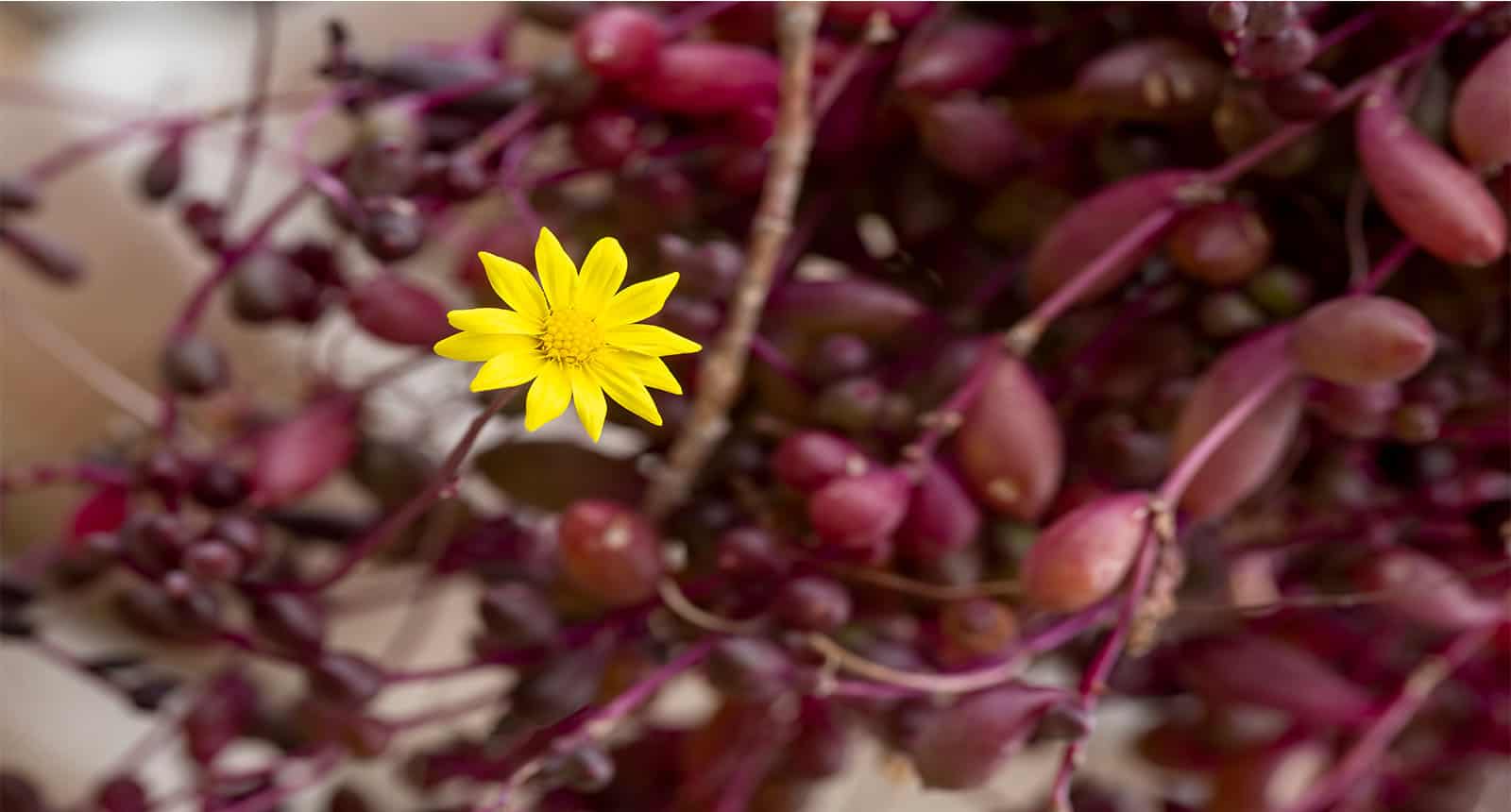
As you can see, most of the succulents on this list are native to South Africa including this one. It’s super vibrant with bean-shaped, plump, blue-green leaves and reddish-purple, bright stems.
I like this plant because it’s eye-catching and produces daisy-like, bright yellow flowers. The best part? It thrives under bright sunlight but will handle full sun too. And it needs a well-draining potting mix.
You will need to water this plant when the soil is dry. Also, provide less water during the winter days and more during the summer heat. The Ruby necklace is one of my favorite succulents on this list.
Watch this video to know more:
21. Porcelain Flower (Hoya Pachyclada)
Hoya Pachyclada is another hanging plant from the Hoya genus. It’s also known as the Porcelain flower. This plant doesn’t have a vine and develops slower than other plants from this genus.
The stems feature green, thick leaves with red corners. They’re quite short and can develop up to 0.25 inches thick when mature. The name of this plant comes from the lovely white bright flowers.
The flowers make a perfect circle as 20-25 of them pile in one cluster. The best part? This plant doesn’t only look good but also smells good. It provides a pleasant and refreshing citrus smell.
Watch this video to know more:
22. A string of Dolphins (Senecio peregrinus)
The String of Dolphins is a hybrid of candle plants and a string of pearls. It’s a trailing succulent that’s a part of the Asteraceae family. They thrive both indoor and outdoor.
However, they’re not frost-tolerant. So, they require warm weather all year round to develop the proper way. The leaves can keep water for a long time. Thus, they’re drought-tolerant.
Meaning, they don’t need frequent watering. Let the ground dry completely between waterings to stop root rot. Then, water properly. It’s a unique and eye-catching succulent.
Watch this video to know more:
23. Lantern Flower (Ceropegia Haygarthii)
The Lantern flower, also known as Ceropegia Haygarthii is one of the weirdest-looking plants. The flower is shaped like a lantern. This is where the name lantern flower came from.
What’s funny about this plant is that the flower traps insects that feed on its nectar. The inside features hairs that point downwards, which trap the insects. Nonetheless, I still like the plant.
If you’re searching for a strong growing, semi-evergreen, and twining stem-succulent, then this flower is the perfect choice for you. It has ovate leaves and grows up to 3 m long.
Watch this video to know more:
24. Peanut Cactus (Echinopsis Chamaecereus)
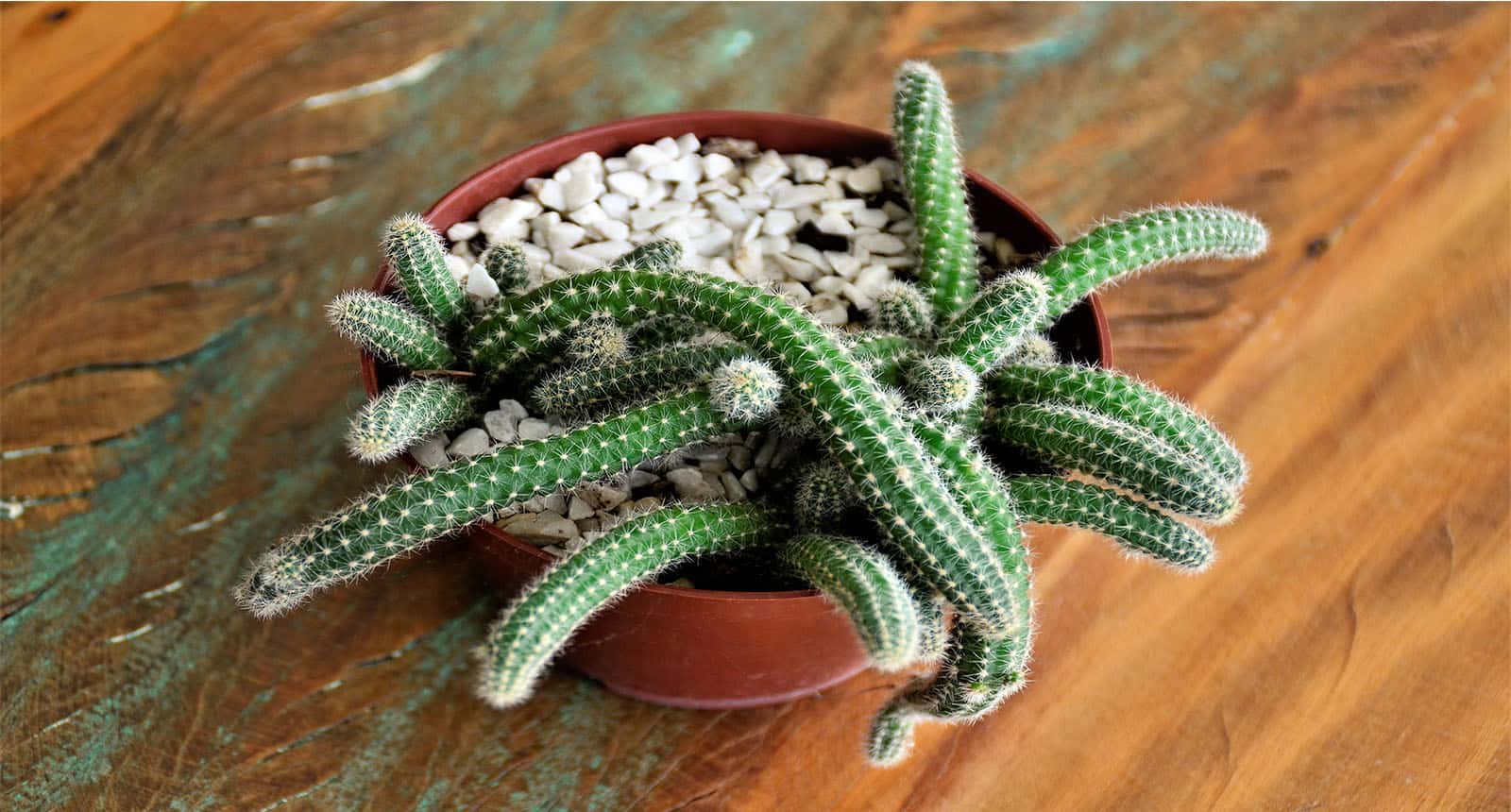
The Peanut Cactus grows in clumps of finger-like stems. It’s Native to Argentina and goes up to 6 inches (10cm) in length. The stem of this plant features small white spines. They’re bristly and soft and provide large, bright red-orange flowers.
This plant just thrives in hanging baskets. Just deliver a well-draining potting mix and watch it thrive. And don’t forget to water it properly.
Watch this video to know more:
25. Sedum Little Missy (Crassula Petite Bicolor)
Looking for a sun-loving and fun succulent that’s easy to care for? If so, Sedum Little Missy is the ideal choice for you. It comes with heart-shaped variegated foliage with lovely pink corners.
What I like most about this plant is that it’s fast-growing. And can grow up to 4 inches. Just place it in the hanging basket and give the space to fall over the edges. It makes for a nice decoration.
Watch this video to know more:
26. Monkey’s Tail (Hildewintera Colademononis)
The Monkey’s Tail is native to Bolivia. It’s also known as Cleistocactus Winterocereus and grows upright at first. Then, it falls as it matures. This plant can develop up to 8 ft (2.5) in length.
It has light-green stems covered with white, soft, and long hairy spines. A funny fact about this hanging plant is that it’s epilithic. Meaning, it grows on rocks and can tolerate direct sunlight.
This plant clumps at the platform and branches out as it grows. But here’s the kicker. It provides bright magenta or red-colored flowers. It requires brightness and well-draining ground.
Watch this video to know more:
27. Ice Plant (Dorotheanthus Bellidiformis)
The Ice plant works well for any floral environment. Also known as Dorotheanthus bellidiformis, this one is a low-growing plant with reddish stems and grayish-green rubbery leaves.
Both leaves and stems are covered in translucent bobbies. They make the plant look like it’s covered in small beads of ice. This is where the name of these succulent hanging plants comes from.
However, the main feature of the Ice plant is how it provides a lot of brilliant and daily-like flowers. This plant can develop up to 8 inches in height and can fall up to 20 inches in length.
Watch this video to know more:
28. Medusa Head (Euphorbia caput-medusae)
The Medusa head resembles a snake. It has short and cylindrical stems that develop up to 11 inches in length. They feature green small leaves that tend to bloom once they get mature.
Unlike any other hanging plant, you will need to water this one frequently. Otherwise, it will suffer from droughts, especially during hot days. However, it’s not something too hard to do.
Watch this video to know more:
29. Panda Plant (Kalanchoe Tomentosa)
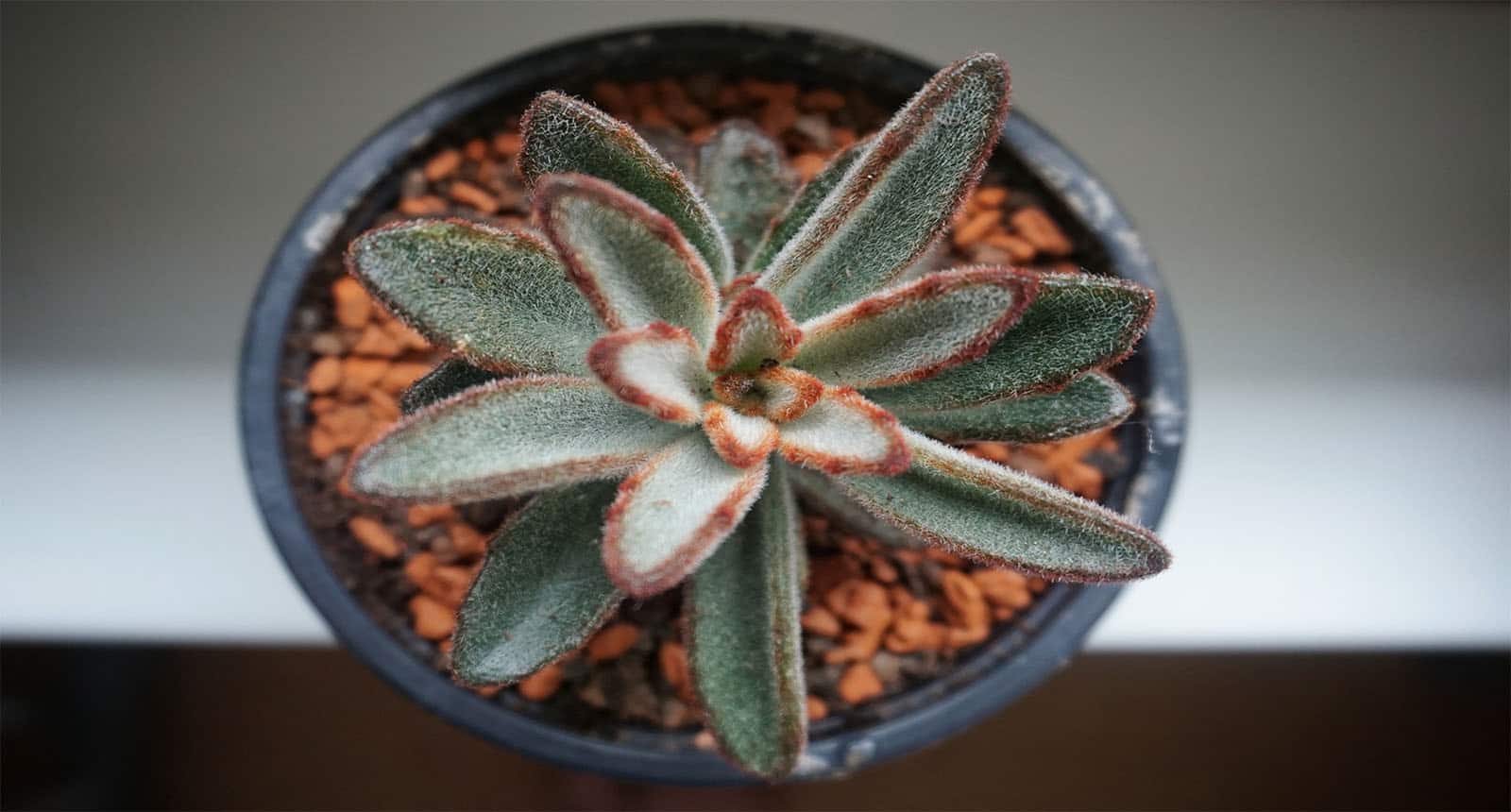
The Panda plant is so adorable that you will want to have it all over the home. It features white and thin “hairs” known as trichomes which provide coverage for the leaves. It’s called the Panda plant because of the brownish spots which make it appear like a panda.
Watch this video to know more:
30. Shark Tooth or Red Pagoda (Crassula capitella)
Last but not least, I have a very interesting plant that you need to consider. It’s called the Red Pagoda or Shark Tooth. It starts by developing upright piled leaves that will develop into trailing stems.
Over time, those stems can spiral for a unique and fascinating appearance. Once they reach 6 inches tall, the stems will start to trail and will fall over your lovely hanging baskets, and spread up to 2 ft.
They may appear small at first. However, they will send out runners that will complete any space it’s in. This plant is native to South Africa and doesn’t mind the long, cool nights in the winter months.
Once winter finishes, they will probably drop the ends of their stems to propagate. You can collect these plantlets and put them in your outdoor garden (they will perform amazingly in a rock garden).
Watch this video to know more:
How Do You Plant a Hanging Succulent Basket?
Succulents are best grown in tall pots or hanging baskets with enough space for the stems to grow out. They’re usually easy to develop from stem cuttings and need bright light and well-drained soil.
Watch this video to know more:
How Do You Look After Hanging Succulents?
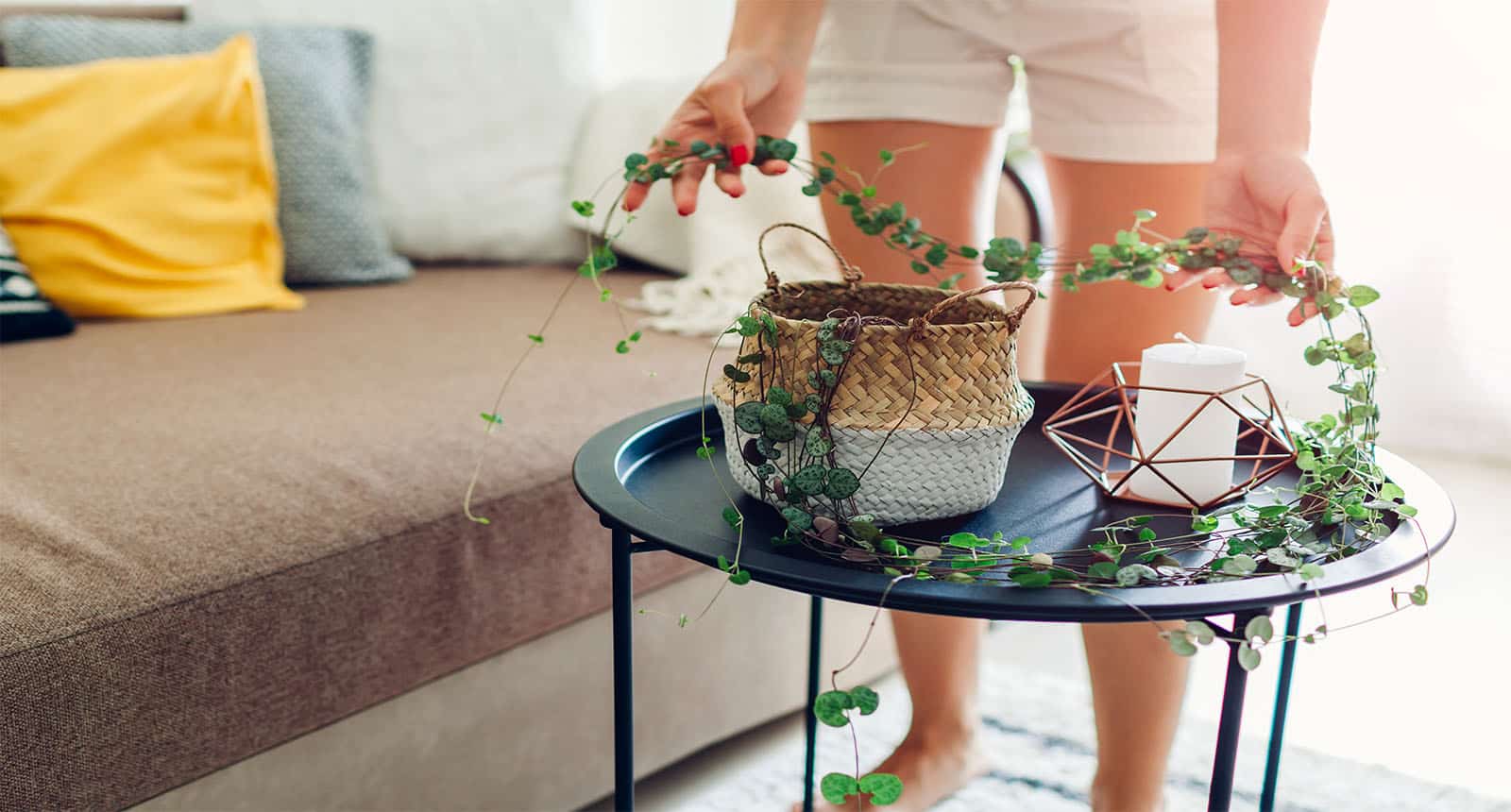
Succulents are the easiest plants to grow. They’re adapted to survive in harsh environments and can go with little water for long periods. However, they still require basic care to thrive all year round.
Let Your Succulents Breathe
Some succulent types thrive indoors including kalanchoe and aloe. However, others can’t withstand the heat. This is why they need good air circulation. Therefore, give your plants space outdoors.
Provide Some Shade For Your Hanging Succulents
As I already mentioned, most succulent plants don’t thrive under direct sunlight and hot temperatures. Meaning, they need shade. Provide sun protection, especially if your plant is smaller or the temperature hits the 90-degree mark. Otherwise, opt for blue, red, gray, or succulents covered with spines.
Obtain The Right Soil For Your Succulent Hanging Plants
Always utilize a fast-draining cactus mix. Or provide a regular potting soil with coarse perlite, pumice, or crushed lava. A great recipe is 1 part amendment and 4 parts traditional potting mix.
Succulent Plants Are Thirsty, Too
Most succulent plants like it when the ground becomes dry before being watered. However, during dry times, if you water smaller plants, do it once a week. Larger ones require water every 2 weeks.
Include Some Drainage
Succulent plants don’t like excess water. Thus, make sure there’s proper drainage in your hanging basket or other containers. If your containers or pots have no drainage, water these compositions lightly.
Feed Your Succulent Plants
They need food, too. Although they often develop in low-nutrient places, they still need good fertilizer. Annual feeding with a well-balanced organic fertilizer is enough for succulent hanging plants.
Reconsider Propagation
If you’re used to plucking a stem of your plants and submerging it in water to watch roots develop, that won’t work with succulents.
With succulents, you can pluck the stem and leave it dry out in the shade for at least three days. This is called healing and helps create a callus, preventing rot. Then, put the stem in the soil mix as I instructed above and you watch your plant thrive.
Protect Your Succulents in The Winter
Some succulents such as types of Sempervivum and Sedum can handle freezing temperatures. However, that’s not the case with most of them. Keep your plants in light containers, so you can easily move them indoors. Also, they have a bigger chance of survival if they’re dry before cold days strike.
Let’s Hang Some Plants
Any succulent that falls is suitable for hanging baskets. However, you should also consider the style that you prefer and how you want to make it complement well inside your garden or home.
Do you have any favorite succulent hanging plants yet? Is there something I forgot to mention about this topic? Do you have any planting and maintenance tips and tricks that you would like to share?
Drop a comment below and let’s chat about succulents. Also, don’t forget to share this article with other plant enthusiasts. Let’s gather and plant something that will add character to our homes.
